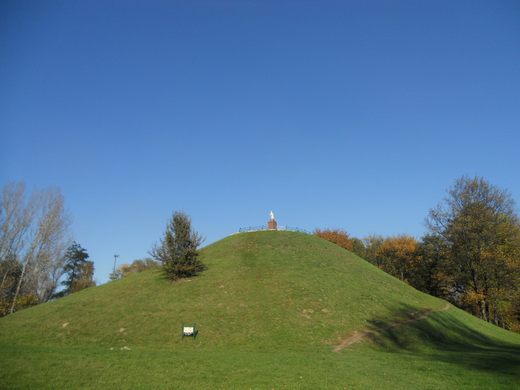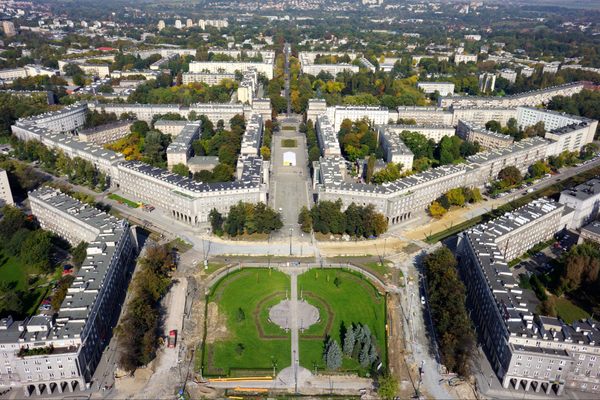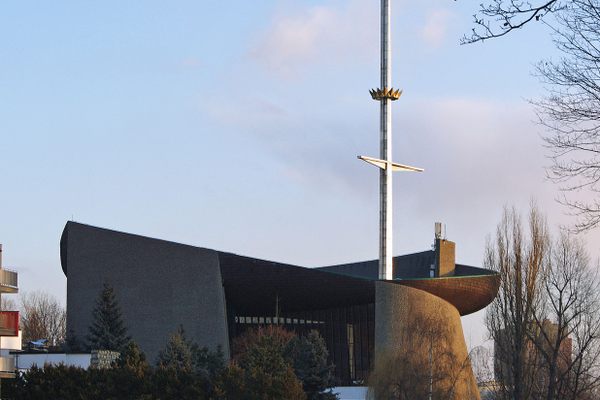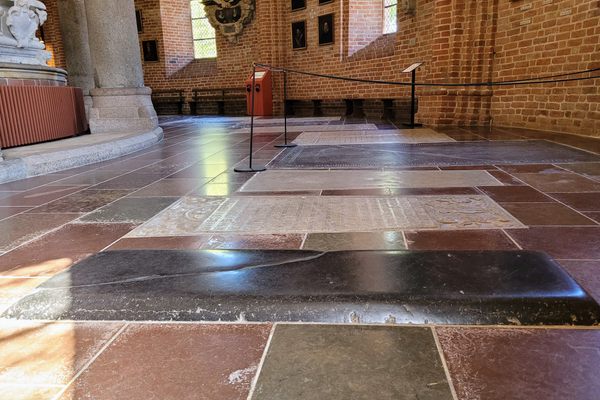Kopiec Wandy (Wanda Mound)
An artificial hill and apparent calendric structure built in the Early Middle Ages immortalizes a legendary Polish princess.
Numerous versions of an ancient legend surround this 50-foot manmade hill on the outskirts of Kraków. All, however, center around the mound’s namesake. In some version a princess, in others a queen, Wanda is a mythic embodiment of the courage, resilience, and devotion of the Polish people.
As legend has it, Wanda became the ruler of her region and people upon the death of her father, King Krak, after whom the city of Kraków was named. Perceiving this political development as an opportunity for expansion, a German ruler named Rytygier invaded to take advantage of the inexperienced queen. From here, the various versions of the legend differ.
In some versions, Rytygier proposed marriage to avoid conflict, and when Wanda—whose beauty stunned his troops into laying down their weapons—refused, he committed suicide. Another versions states that the two armies fought and when the Polish forces emerged victorious, Rytygier (again) committed suicide. In these iterations, Wanda subsequently grew old and wise while lands and people prospered under her guidance.
More romanticized versions of the story end with the deaths of both leaders. In one, Wanda and her loyal forces went to battle against her would-be suitor and upon victory, Wanda killed herself as a sacrifice to thank her gods for aiding her people in battle. Yet another adaptation has her killing herself prior to the battle to earn the support of the gods, rather than thank them for it after the fact. However, two things always stay the same: The Slavic forces win; and Rytygier dies in the battle.
Regardless of which version is told, Princess Wanda has always remained near and dear to the hearts of Krakovians. The mound, which was built in the 7th or 8th century, is celebrated as her burial site (though there is no evidence confirming this) and is located just 6 miles away from the Krakus Mound, her father’s supposed eternal resting place.
Modern scholars believe that the two mounds have astronomical significance related to Celtic pagan beliefs. It seems that they, along with two nearby natural hills called Sikornik and Wawel, may constitute a gigantic calendar.
Standing atop Sikornik (the westernmost of the hills), an observer can watch the sun rise directly over Wawel on both the spring and fall equinoxes. From the same vantage point, the sun rises directly over Krakus Mound on November 1, which was the Celtic New Year. From atop Krakus Mound, the sun rises directly over Wanda Mound on May 1, which was the eve of the Celtic sun celebration, the second most important holiday of the year.
Today, the grassy area around Wanda Mound is a popular destination for picnickers and families out for a stroll. At the summit of the mound, there is a monument featuring a white Polish eagle atop a red granite base inscribed with the legendary heroine’s name. The monument was designed by prominent Kraków artist Jan Matejko and installed in 1890.
Know Before You Go
Accessible 24/7 and for free. It can be reached by the No. 16 and 21 trams to the Kopiec Wandy stop or by the No. 10 tram to the Fort Mogiła stop, from where you need to take a 10-15-minute walk along the Fortress of Kraków Trail. Currently, a regional train station stop is being built near the site.


















Follow us on Twitter to get the latest on the world's hidden wonders.
Like us on Facebook to get the latest on the world's hidden wonders.
Follow us on Twitter Like us on Facebook